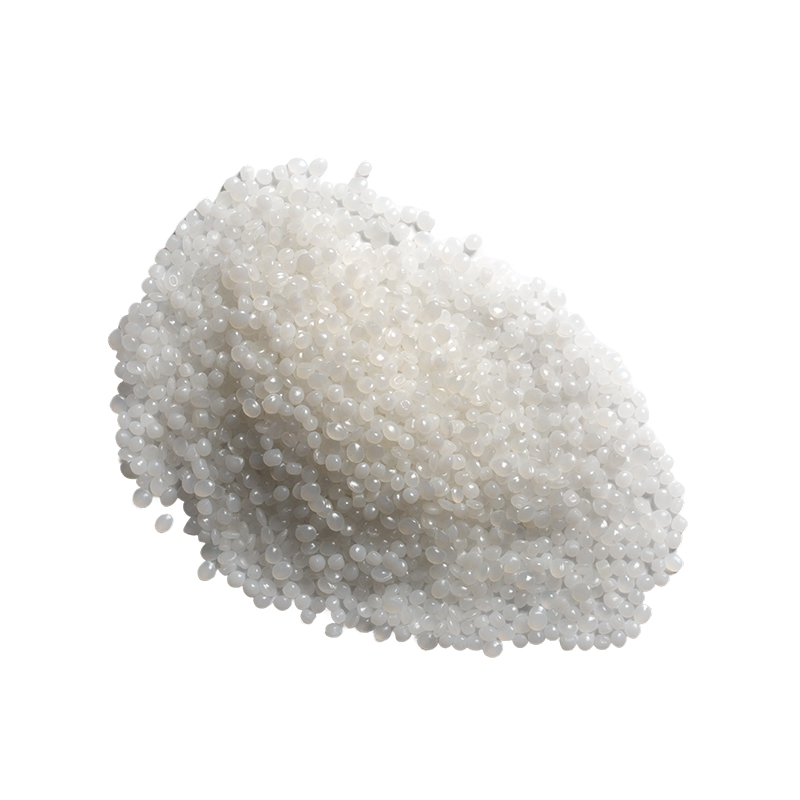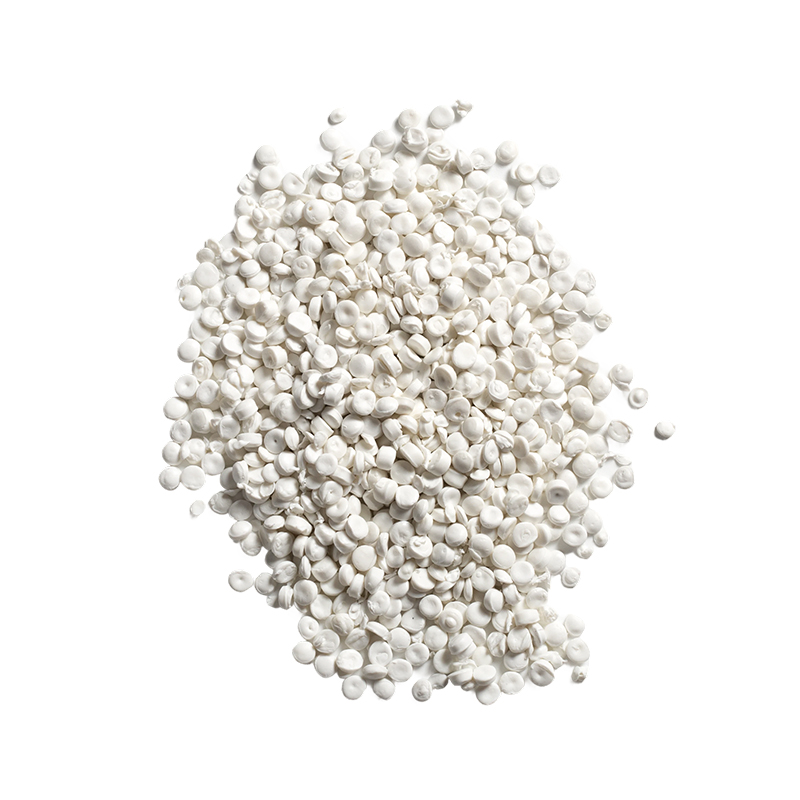Are the color and transparency of PP recycled pellets controllable?
Release Time : 2025-08-25
With the rapid development of the plastics circular economy, PP recycled pellets, as a key vehicle for the reuse of polypropylene resources, are being widely used in packaging, daily necessities, home appliances, automotive parts, and other applications. However, when considering using recycled materials, many companies often have concerns about their appearance, particularly the controllability of color and transparency. In fact, with the continuous advancement of sorting, cleaning, and modification technologies, the controllability of color and transparency in modern PP recycled pellets has been greatly improved, enabling them to meet the diverse and high-standard demands of end products.
Controlling the color of PP recycled pellets primarily relies on meticulous sorting at the front end. During the recycling process, waste plastics come from a wide range of sources, including used packaging, appliance casings, automotive parts, and woven bags. These materials inherently possess a variety of colors and may even be contaminated with other plastic impurities. To ensure color consistency throughout the recycled material, advanced recycling lines typically utilize a combination of near-infrared spectroscopy (NIR) sorting, visual recognition systems, and manual re-sorting to precisely separate PP waste of different colors and materials. For example, transparent or light-colored PP bottles and food containers can be separately sorted for the production of light-colored or dyeable recycled pellets, while dark or mixed waste can be used to produce recycled materials with less stringent color requirements, such as black or dark gray. This grading mechanism provides a solid foundation for subsequent color control.
During the washing and pelletizing process, efficient multi-stage water washing, friction washing, and flotation separation technologies effectively remove label residue, oil, dust, and other impurities, significantly improving the whiteness and cleanliness of the recycled materials. Some high-end production lines also incorporate bleaching or decolorization processes to further improve the appearance of light-colored materials. The purified PP recycled material base is purer, providing greater flexibility for subsequent color adjustment. Manufacturers can precisely control the color of the final pellets by adding specific masterbatches or color powders during the pelletizing process according to customer requirements. Whether it's proprietary colors required for corporate brand logos or popular Morandi and macaron hues in the consumer goods market, customized color schemes can achieve stable mass production.
Controlling the transparency of PP recycled pellets is more challenging, but not impossible. Virgin PP inherently possesses excellent translucency, while the transparency of recycled materials is primarily influenced by the purity of the raw material, melt filtration accuracy, and processing temperature. Using high-purity transparent PP scrap as raw material and employing a high-mesh melt filter (e.g., 100 mesh or higher) can effectively trap tiny impurities and unmelted material, reducing black specks and crystals in the pellets, thereby improving light transmittance. Furthermore, controlling process parameters such as screw speed, processing temperature, and cooling rate can help minimize molecular chain breakage and oxidation, maintaining the material's optical properties. While achieving the clarity of virgin transparent PP remains challenging, for most applications that don't demand extreme transparency, such as translucent storage boxes, light-colored turnover boxes, or everyday utensils, high-quality recycled PP pellets can provide a satisfactory visual effect.
Notably, the controllability of color and transparency is also closely linked to the design strategy of the end product. More and more brands are actively embracing the "recycled texture" of recycled materials, incorporating the subtle textures or soft tones characteristic of recycled materials into their design language. For example, using recycled PP in neutral tones like light gray, off-white, or matte black to create home appliance housings or office supplies not only obscures the material's "recycled" nature, but also creates a low-key, environmentally friendly, and premium feel. Some companies even use "visible traces of recycling" as a symbol of their environmental commitment to enhance consumer recognition of sustainability.
In summary, the color and transparency of PP recycled pellets are no longer uncontrollable "shortcomings" but rather "designable properties" that can be precisely controlled through advanced technology and scientific management. Through comprehensive process optimization from front-end sorting, mid-end purification, and back-end color matching, recycled materials can not only meet diverse color requirements but also achieve transparency levels approaching that of virgin materials. This controllability significantly expands the application scope of PP recycled pellets, elevating them from an "alternative material" to a "mainstream choice," truly achieving a win-win situation for both environmental protection and aesthetics.
Controlling the color of PP recycled pellets primarily relies on meticulous sorting at the front end. During the recycling process, waste plastics come from a wide range of sources, including used packaging, appliance casings, automotive parts, and woven bags. These materials inherently possess a variety of colors and may even be contaminated with other plastic impurities. To ensure color consistency throughout the recycled material, advanced recycling lines typically utilize a combination of near-infrared spectroscopy (NIR) sorting, visual recognition systems, and manual re-sorting to precisely separate PP waste of different colors and materials. For example, transparent or light-colored PP bottles and food containers can be separately sorted for the production of light-colored or dyeable recycled pellets, while dark or mixed waste can be used to produce recycled materials with less stringent color requirements, such as black or dark gray. This grading mechanism provides a solid foundation for subsequent color control.
During the washing and pelletizing process, efficient multi-stage water washing, friction washing, and flotation separation technologies effectively remove label residue, oil, dust, and other impurities, significantly improving the whiteness and cleanliness of the recycled materials. Some high-end production lines also incorporate bleaching or decolorization processes to further improve the appearance of light-colored materials. The purified PP recycled material base is purer, providing greater flexibility for subsequent color adjustment. Manufacturers can precisely control the color of the final pellets by adding specific masterbatches or color powders during the pelletizing process according to customer requirements. Whether it's proprietary colors required for corporate brand logos or popular Morandi and macaron hues in the consumer goods market, customized color schemes can achieve stable mass production.
Controlling the transparency of PP recycled pellets is more challenging, but not impossible. Virgin PP inherently possesses excellent translucency, while the transparency of recycled materials is primarily influenced by the purity of the raw material, melt filtration accuracy, and processing temperature. Using high-purity transparent PP scrap as raw material and employing a high-mesh melt filter (e.g., 100 mesh or higher) can effectively trap tiny impurities and unmelted material, reducing black specks and crystals in the pellets, thereby improving light transmittance. Furthermore, controlling process parameters such as screw speed, processing temperature, and cooling rate can help minimize molecular chain breakage and oxidation, maintaining the material's optical properties. While achieving the clarity of virgin transparent PP remains challenging, for most applications that don't demand extreme transparency, such as translucent storage boxes, light-colored turnover boxes, or everyday utensils, high-quality recycled PP pellets can provide a satisfactory visual effect.
Notably, the controllability of color and transparency is also closely linked to the design strategy of the end product. More and more brands are actively embracing the "recycled texture" of recycled materials, incorporating the subtle textures or soft tones characteristic of recycled materials into their design language. For example, using recycled PP in neutral tones like light gray, off-white, or matte black to create home appliance housings or office supplies not only obscures the material's "recycled" nature, but also creates a low-key, environmentally friendly, and premium feel. Some companies even use "visible traces of recycling" as a symbol of their environmental commitment to enhance consumer recognition of sustainability.
In summary, the color and transparency of PP recycled pellets are no longer uncontrollable "shortcomings" but rather "designable properties" that can be precisely controlled through advanced technology and scientific management. Through comprehensive process optimization from front-end sorting, mid-end purification, and back-end color matching, recycled materials can not only meet diverse color requirements but also achieve transparency levels approaching that of virgin materials. This controllability significantly expands the application scope of PP recycled pellets, elevating them from an "alternative material" to a "mainstream choice," truly achieving a win-win situation for both environmental protection and aesthetics.







